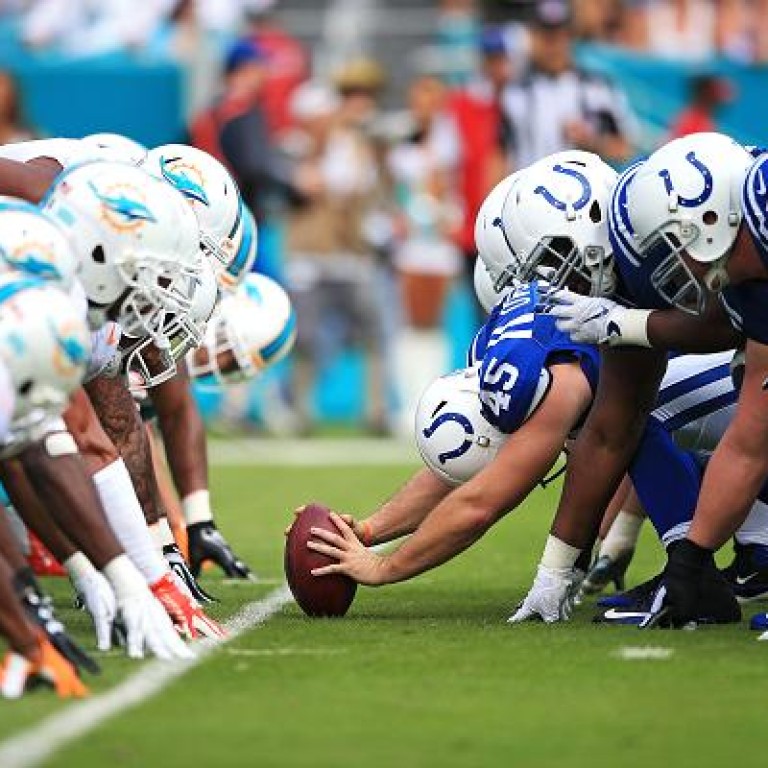
Change the game, not just the helmets to tackle NFL's concussion concerns, says expert
Concussion specialist says 'fundamental change' is needed to ensure safety as redesigns to helmets will 'never be the answer'
In less than a week, the National Football League in the US will hold its draft, where 32 teams will select new players. This year, however, will take place in the wake of a raft of early retirements which many commentators have linked to growing concerns about the toll football is taking on players' bodies.
Even more troubling, each year comes with more questions about the brain health of former players after they leave the game. Last fall, a Boston University (BU) study found 90 out of 94 deceased former NFL players had brains that showed evidence of brain disease.
It's called Chronic Traumatic Encephalopathy (CTE), a progressive degenerative brain disease found in individuals with a history of repetitive brain trauma—including concussions. In the 2015-2016 season, NFL data showed a 58 per cent surge in reported concussions, despite cracking down on player safety and rolling out new rules to prevent injuries. Last week, a federal judge upheld the league's US$1 billion settlement with former players who sustained concussion-related injuries during their active years.
However, it's not just concussions, Dr. Ann McKee, director of the BU CTE Center that studies the impact of head trauma and concussions, explained. The center has received donations from the National Football League to conduct the research.
Rather, it's the "repetitive trauma…minor trauma found in every play of the game, routinely," McKee says. "Over time, years of exposure to…mild head trauma in some individuals leads to this progressive deterioration that usually shows up years later."
So far, CTE can only be determined after death.
Mike Webster of the Pittsburgh Steelers was the first NFL player to be diagnosed with CTE after he died in 2002. Since then evidence of the disease has been found in several other deceased players, including Junior Seau (Chargers/Patriots), Ken Stabler (Raiders), and Frank Gifford (Giants)
McKee, who is also Chief of Neuropathology at the VA Boston Healthcare System, says symptoms of CTE "in older individuals looks symptomatically a lot like Alzheimer's Disease."
But in younger individuals, "in their 20's and 30's," McKee says CTE "is often a change in their personality and behavior. They become very irritable, have a short fuse, become depressed [or] become violent."
McKee echoed a growing concern voiced by football critics, saying that the sport may in fact be too dangerous for young people to play.
"Their brains are still developing. We think that the juvenile or adolescent brain is particularly at risk," she said. "They don't handle changes in blood flow very easily. The [young] brain is particularly susceptible to damage from head trauma."
McKee believes it's not just football that's dangerous to young people's brains. "Any athletic activity that causes head impacts is at risk. So soccer, with heading particularly," as well as other activities like ice hockey, rugby are a risk—including "occasionally baseball and basketball."
A 2010 study by medical journal Pediatrics reported a surge in youth-related basketball injuries, adding that nearly 40,000 children had to be treated in emergency rooms for hits sustained in basketball games.
In the last several years, the league has designed new helmets to cushion players from concussions. That, McKee said, "will never be the answer."
Although helmet design has helped prevent "sudden death in football…they weren't designed really to mitigate the effects of these acceleration/deceleration injuries that occur and rotational injuries that occur with concussion."
Fundamental change to the games, she said, is needed to ensure safety.
"Awareness is greater than 10 years ago," but we "need to get 'playing with the head' out of all games. People are taking head injury very seriously…but it will take education with players and coaches and families, to eliminate as much head contact as possible."

